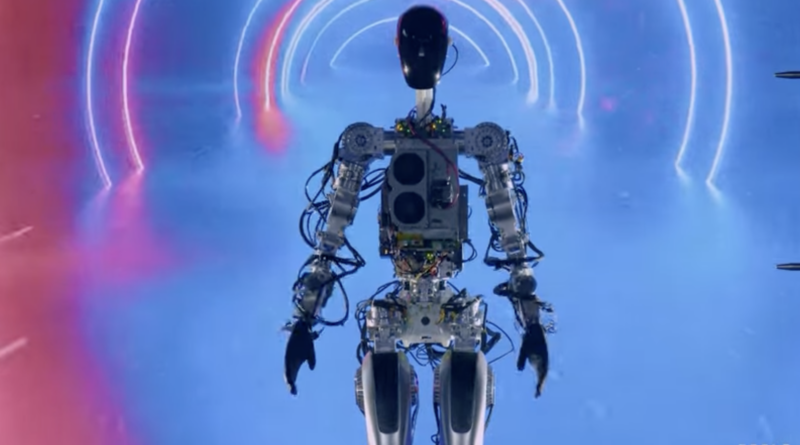Tesla Bot and Mobility: From Quadrupeds, to Wheels, to Biped
For centuries, travelers had horses’ asses in their sights because they formed the power train. Until the whinnying quadrupeds were replaced by a huffing metal block. An engine on a carriage, that’s what the first cars looked like. And railroads were nothing more than carriages placed on tracks and connected by chains. The appearance of today’s cars has little in common with the motorcars of yesteryear, just as no one confuses wagons with the first carriage-like railroads.
Many new technologies build on existing technologies and resemble them for the time being. A car was thus nothing more than a horseless carriage. A notebook on the first iPhones reflected elements like ring bars and dashed lines. This is also called skeuomorphism, where a new technology simulates an old one. This eases the transition for users and acceptance of the new technology. After some time to get used to the new technology, these old-fashioned elements can be eliminated, allowing the full potential of the new technology to be realized.
Just as we saw in the first automotive revolution – the transition from carriages to cars – we are seeing the first beginnings of this in the second automotive revolution. Electric cars no longer need an engine compartment because electric motors are much more compact, do not require a transmission or exhaust and fueling systems. This means that the freed-up space can be used in a completely different way and allows new vehicle designs. With the revolution in control of the vehicle taking place at the same time as the revolution in the powertrain – from humans to computers – other elements in the vehicle are disappearing: the steering wheel, the rearview mirrors or the gas and brake pedals.
Completely new mobility concepts are presented that deviate entirely from our previous ideas. The Cruise Origin or the vehicle from Zoox, which have no front or back and can drive in both directions, Robomart, a supermarket on wheels, delivery robots like those from Nuro or Udelv, which drive on the street and are more like refrigerators on wheels, or the cooler-like delivery robots that drive on the sidewalks, suddenly we are flooded with new designs.
And I’m not even talking about all the new concepts for flying passenger cabs and delivery drones. But another form of mobility shows us that this is by far just the beginning. Humanoid robots on two or more legs. And the introduction of the Tesla Bot opens up new areas of application.
Although Elon Musk spoke at AI Days 2022 of the Tesla Bot primarily as a helper in production and in the warehouse, pointing to all the technology built into the robot, the possibilities that this type of robot opens up for people in terms of mobility is at least as exciting and will change many things.
No car today can climb stairs, push down doorknobs or bring coffee from the machine to my table. And the absurdity that today Uber drivers bring food orders by car, i.e. move 2 tons of weight to deliver one kilogram of goods to us, is a waste of energy and resources.
Scene from the 2004 movie iRobot
Robots in the form of Tesla bots that run errands, do the shopping, carry objects and thus relieve us humans of time-consuming and mundane tasks will probably quickly become a familiar sight. And this form of mobility doesn’t require major changes to our existing infrastructure, even if we want to implement new building codes. Just as we build handicapped-accessible street crossings and building entrances, we want to implement robot-friendly architecture. And that always accommodates people, too. Already handicapped-accessible architecture made life easier for healthy people as well: the suitcase that could be rolled up, the stroller that doesn’t need to be lifted, the elderly person who finds it difficult to climb stairs, or the temporarily disabled person with a leg cast benefits just as much.
The extent to which Tesla sees this as a continuation of mobility can be seen in its use of Tesla Autopilot and Full Self-Driving technology, which is already used in Tesla vehicles today. The same technology that drives cars today will be used in the Tesla Bot.
In other words, we are redefining mobility, and we are only beginning to understand the new possibilities. And this is an opportunity for all of us to make a contribution.
This article was also published in German.

